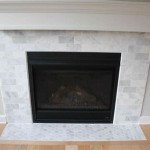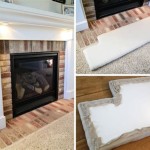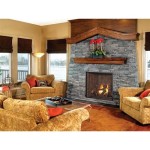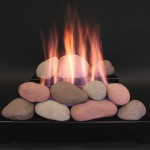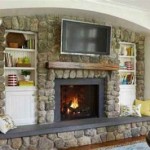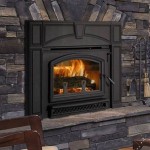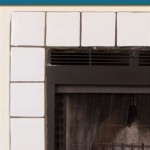Understanding Why Your Pilot Light Gas Fireplace Stays On
A pilot light gas fireplace, a popular feature in many homes, offers a comforting ambiance and supplemental heat. However, a common query arises regarding the pilot light: why does it remain constantly lit? While seemingly a simple design element, the continuous operation of the pilot light serves several crucial functions and stems from specific engineering considerations. This article will explore the reasons behind this design, the benefits it provides, potential drawbacks, and troubleshooting steps when issues arise.
The Purpose of a Pilot Light
The pilot light in a gas fireplace serves as a small, continuous flame that ignites the main burner when heat is desired. Its primary function is to eliminate the need for an external ignition source, such as a match or spark igniter, each time the fireplace is used. This offers convenience and a degree of safety, particularly in older models. Without a standing pilot, the fireplace would require a more complex and potentially less reliable ignition system.
The continuous flame also helps to keep the thermocouple or thermopile, which are crucial safety components, heated. These devices generate a small electrical current when exposed to heat. This current is essential for holding open the main gas valve. If the pilot light were to extinguish, the thermocouple or thermopile would cool, cutting off the gas supply to the main burner, preventing a potentially hazardous gas leak.
Furthermore, the constant presence of the pilot light helps to prevent moisture buildup and condensation within the gas lines and burner assembly. This is particularly important in climates with high humidity or where the fireplace is not used frequently. Moisture can lead to corrosion and blockages, potentially impacting the fireplace's performance and longevity.
Benefits of a Standing Pilot Light
Several benefits accrue from having a gas fireplace with a perpetually lit pilot light. One of the most prominent is the inherent reliability of the ignition system. With a continuous flame, there is no reliance on electronic components or batteries that can fail. This ensures that the fireplace is readily available for use whenever needed, particularly during power outages or emergencies when alternative heating sources may be unavailable.
Another significant advantage is the simplification of the fireplace’s operation. Users do not need to fumble with matches or spark igniters, especially beneficial for individuals with limited dexterity or mobility. A simple switch or remote control activation is all that is required to initiate the main burner, providing immediate warmth and comfort.
The consistent gentle heat emitted by the pilot light, albeit minimal, contributes to maintaining a slightly warmer temperature within the firebox. This can help to prevent drafts and maintain a more consistent temperature in the room, especially in colder climates. This also aids in keeping the components of the fireplace in optimal condition as described previously.
Potential Drawbacks and Considerations
Despite the benefits, a standing pilot light is not without its drawbacks. The most significant concern is the continuous consumption of natural gas or propane, even when the fireplace is not actively being used. This translates to a small but measurable increase in energy bills over time. While the cost may seem negligible on a daily basis, it can accumulate significantly over the course of a year, especially in regions with long heating seasons.
Another consideration is the potential for heat generation in the immediate vicinity of the fireplace. While the heat output from the pilot light is minimal, it can still contribute to a slightly warmer environment near the unit. This may be undesirable during warmer months when cooling is preferred. Careful consideration should be taken to ensure that the pilot light does not cause localized overheating of nearby materials or objects.
Although equipped with safety mechanisms, a constantly burning pilot light does present a slight risk of gas leaks or carbon monoxide exposure if the fireplace is not properly maintained or if components fail. Regular inspections and maintenance are crucial to ensure the safe and efficient operation of the unit. This includes checking for gas leaks, inspecting the burner assembly, and verifying the proper functioning of the thermocouple or thermopile.
Troubleshooting Pilot Light Issues
Several common issues can arise with pilot light gas fireplaces, often requiring troubleshooting to resolve. A frequent problem is the pilot light extinguishing unexpectedly. This can be caused by a variety of factors, including drafts, a dirty pilot orifice, a faulty thermocouple or thermopile, or low gas pressure. Addressing this requires a systematic approach to identify and rectify the underlying cause.
A draft can disrupt the pilot flame, causing it to flicker and eventually extinguish. Ensuring proper ventilation and eliminating drafts near the fireplace can help to resolve this issue. A dirty pilot orifice, which is the small opening through which gas flows to the pilot light, can also impede the flame. Cleaning the orifice with a small wire or compressed air can restore proper gas flow.
A malfunctioning thermocouple or thermopile is a common cause of pilot light problems. These devices are responsible for generating the electrical current that holds the main gas valve open. If they fail, the pilot light may ignite briefly but extinguish as soon as the control knob is released. Replacing the faulty thermocouple or thermopile is often necessary to restore proper operation.
Low gas pressure can also prevent the pilot light from staying lit. This may be due to problems with the gas supply, such as a partially closed valve or a regulator malfunction. Checking the gas supply and ensuring that all valves are fully open can help to resolve this issue. In some cases, it may be necessary to contact a qualified gas technician to diagnose and repair any underlying gas supply problems.
Another common issue is a weak or yellow pilot flame. A healthy pilot flame should be blue and stable. A weak or yellow flame indicates incomplete combustion, which can lead to carbon monoxide production. This can be caused by a dirty pilot orifice, a lack of oxygen, or a problem with the gas mixture. Cleaning the pilot orifice and ensuring proper ventilation can help to improve the flame quality.
If the pilot light is difficult to light, it may be due to a clogged pilot tube or a faulty igniter. The pilot tube carries gas to the pilot light, and if it becomes clogged, it can prevent the pilot light from igniting. Cleaning the pilot tube with a small wire or compressed air can help to resolve this issue. A faulty igniter, which is responsible for creating the spark that ignites the pilot light, can also prevent ignition. Replacing the igniter may be necessary.
Regular maintenance is key to preventing pilot light problems. This includes cleaning the burner assembly, inspecting the gas lines for leaks, and verifying the proper functioning of all safety components. Following the manufacturer's recommended maintenance schedule can help to ensure the safe and efficient operation of the fireplace. If uncertain about any aspect of fireplace maintenance or repair, it is always best to consult a qualified gas technician.
Alternatives to Standing Pilot Lights
Modern gas fireplace technology has introduced alternatives to the traditional standing pilot light. Electronic ignition systems, for example, eliminate the need for a continuous flame. These systems use a spark igniter or hot surface igniter to light the main burner only when heat is required. This eliminates the continuous gas consumption associated with a standing pilot light, resulting in significant energy savings over time.
Another alternative is intermittent pilot ignition (IPI) systems. These systems light the pilot light only when the fireplace is turned on. Once the main burner is ignited, the pilot light is extinguished. This reduces gas consumption significantly compared to a standing pilot light, while still providing a reliable ignition source. These systems are typically more energy-efficient and environmentally friendly.
Direct vent gas fireplaces often incorporate sealed combustion systems that draw outside air for combustion and vent exhaust gases directly outdoors. This eliminates the need for a traditional chimney and improves combustion efficiency. These fireplaces often feature electronic ignition systems or IPI systems, further reducing energy consumption and improving overall safety.

Should I Turn Off The Pilot Light In Spring B C Comfort Fireplace Hvac Repair Installation

Best And No 1 Pilot Light Elegant Fireside Patio
Is It Okay If My Pilot Light Therma Coupler Red Hot When Having The On A Gas Fireplace Quora

Gas Fireplace Won T Stay Lit Magic Touch Mechanical

Is It Okay To Leave A Pilot Light On For Gas Fireplace

Does My Pilot Light Need To Stay On All Year Round We Love Fire

Fireplace Won T Stay Lit This Is How You Fix It

How To Relight A Millivolt Valve Gas Fireplace Pilot Light Tophat Pro

How A Pilot Light Works Www Mygasfireplacerepair Com
My Gas Fireplace Pilot Light Works Perfectly However When I Flip The Switch For Rest Of To Turn On Nothing Happens What Quora

